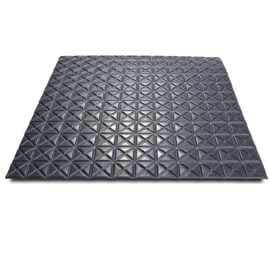What Are Loose-Laid Flooring Membranes
Loose-laid flooring membranes are flexible sheets or rolls of material that are installed over a substrate without the need for permanent bonding or adhesion. They are used as an intermediate layer between the substrate and the finished flooring surface. Loose-laid membranes are commonly made of materials such as rubber, PVC (polyvinyl chloride), EPDM (ethylene propylene diene monomer), or polyethylene.
Uses of Loose-Laid Flooring Membranes
Moisture Barrier: Loose-laid membranes can act as a barrier to prevent moisture from migrating from the substrate to the finished flooring material. This is particularly important in areas prone to moisture infiltration, such as basements, bathrooms, and concrete slabs.
Sound Reduction: Some loose-laid membranes are designed to dampen sound transmission between floors, improving acoustics and reducing noise levels. They can be especially beneficial in multi-story buildings or spaces where sound control is a concern.
Vapour Retarder: In addition to blocking liquid moisture, certain loose-laid membranes also serve as vapour retarders, minimising the passage of water vapour through the flooring assembly. This helps maintain a stable indoor environment and prevents issues like condensation and mould growth.
Crack Isolation: Loose-laid membranes with crack isolation properties provide a flexible barrier that helps prevent cracks in the substrate from transferring through to the finished flooring. This is particularly advantageous in areas with concrete slabs or tiled floors prone to cracking.
Subfloor Protection: Loose-laid membranes offer protection to the subfloor from damage caused by abrasion, impact, or chemical exposure during the construction process or throughout the life of the building.
Thermal Insulation: Some loose-laid membranes incorporate thermal insulation properties, providing a barrier against heat transfer between the substrate and the finished flooring. This can help improve energy efficiency and comfort in heated or cooled spaces.
Ease of Installation and Removal: One of the primary benefits of loose-laid membranes is their ease of installation and removal. They can be laid down quickly without the need for adhesives or fasteners, making them suitable for temporary or modular flooring systems.
Compatibility with Various Flooring Types: Loose-laid membranes are compatible with a wide range of flooring materials, including carpet, laminate, vinyl, hardwood, and tile. They provide a versatile solution for enhancing the performance and longevity of different types of flooring installations.
Contact BaseTec - Complete Systems. Reliably Delivered.
If you require assistance with flooring membranes or need advice on which flooring membrane product is best suited for your requirements, contact our friendly teams in Kent - 01732 906 826 - or Leeds - 0113 521 6789.
Return to our full range of
Flooring Products.
